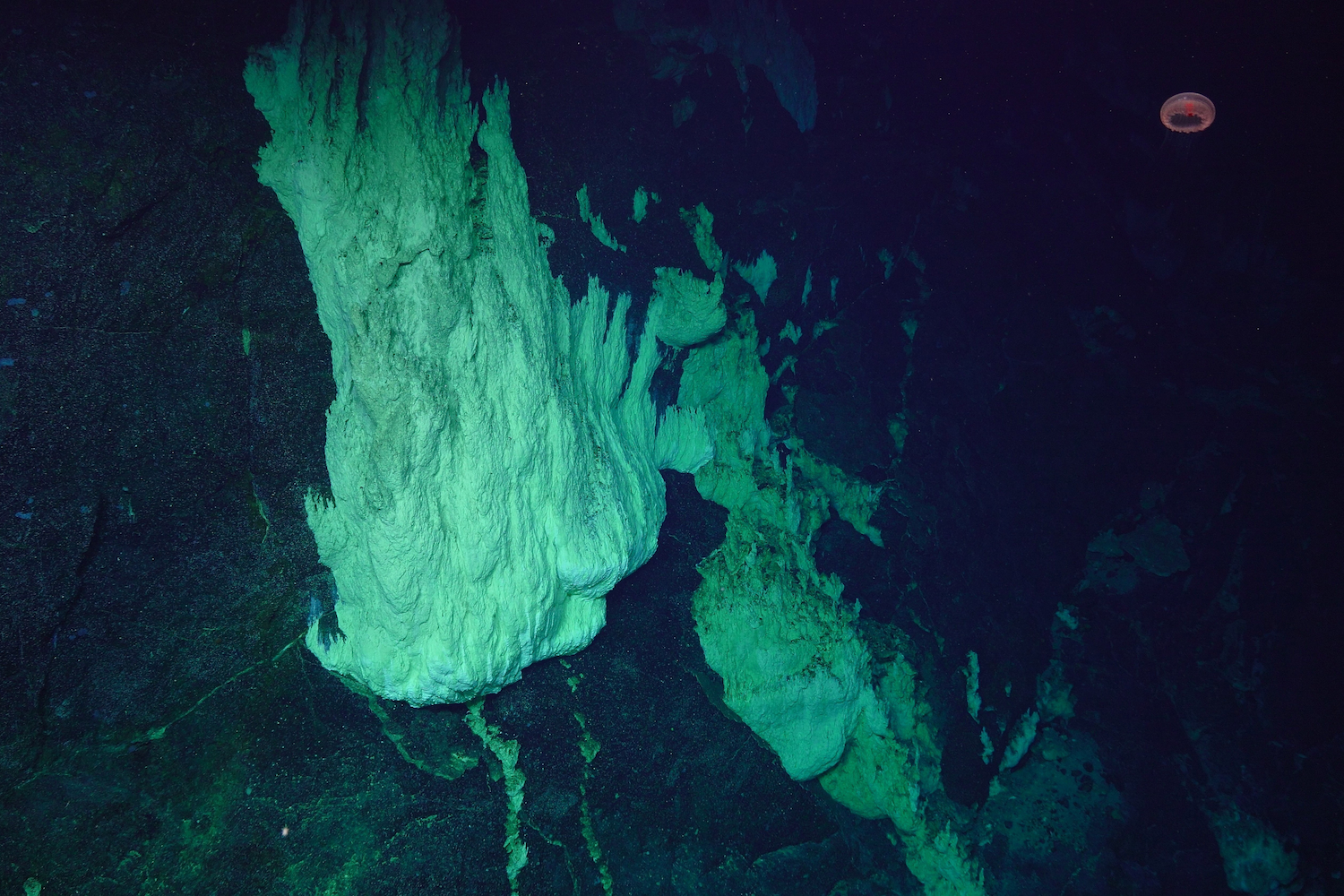A new study is anticipated to offer a breakthrough for researchers to become familiar with life in the harshest of environments.

Image Credit: Bigelow Laboratory for Ocean Sciences.
Researchers from the Bigelow Laboratory for Ocean Sciences examined microbes from an underwater mountain in the Atlantic Ocean, spearheading a technique that may unravel new aspects of how life survives deep under the sea or in space.
The crustal rock at the bottom of the ocean floor is one of the biggest regions on Earth that supports life. The fractures and pores harbor little-known microbes that influence global-scale nutrient cycles. Scientists recently created and exhibited a novel process to analyze them. The findings were published in mBio, an online journal of the American Society of Microbiology.
Most microbial life on Earth is in the subsurface. In order to understand how life has evolved on Earth, how organisms have survived for millennia, you have to look at the subsurface: a huge reservoir of life.
Beth Orcutt, Study Senior Author and Senior Research Scientist, Bigelow Laboratory for Ocean Sciences
The scientists analyzed the microorganisms from Atlantis Massif, a 2.5 mile-high underwater mountain near the Mid-Atlantic Ridge. The region is considered to be an analog for life’s existence on other planets and moons, like Enceladus and Europa. On top of Atlantis Massif is a region named Lost City, which is swarming with life feeding off of activity from hydrothermal vents.
NASA and other institutions are curious about these systems as a model for the origin of life and the survival of organisms in harsh environments.
Distant from the busy ecosystem of Lost City, the rock still harbor life. The microorganisms are distributed in fewer concentrations, which makes them hard to study by analyzing a few rock samples at a time.
Even though there is low biomass in crustal rock, its sheer volume makes it one of the most significant biological habitats of the planet.
Jacqueline Goordial, Study Lead Author and Postdoctoral Scientist, Bigelow Laboratory for Ocean Sciences
Conventionally, scientists investigate microbes by isolating them from rock samples with chemicals. But that method can prove tricky and complicated to execute due to the low abundance of life. Hence, the researchers came up with a novel approach.
The team associated with the Single Cell Genomics Center and the Center for Aquatic Cytometry, both part of Bigelow Laboratory, created a new method by employing a tool called flow cytometry. Flow cytometry enables scientists to analyze and sort cells accurately and rapidly. The approach enables the analysis of a cell’s genetic information, unfolding a world of research opportunities.
This approach provides a way to access the genomes of organisms that are very difficult to study. Being able to access sites with low biomass is huge! It can teach us about the nature of microbial life on our planet and allows us to answer fundamental questions about how they survive and what they eat.
Jacqueline Goordial, Study Lead Author and Postdoctoral Scientist, Bigelow Laboratory for Ocean Sciences
Goordial is now an assistant professor at the University of Guelph.
The researchers analyzed microorganisms from crustal rocks excavated up to 50 ft beneath the ocean floor. They recognized that the ecology represented by the rocks from Atlantis Massif was separate from the Lost City hydrothermal vents, however comparable to other similar settings.
This means that this system, even when uncommon for Earth, is not unique. The microorganisms seem to survive mostly on carbon from seawater, similar to organisms that thrive in water at the ocean bottom. Additionally, some microorganisms could use carbon monoxide for energy.
The research findings showcase that the new process is beneficial for studying other environments where the microbes are limited, like other deep-sea locations, permafrost, or even other planets.
“We’re demonstrating methods that could be used for samples taken by a NASA rover that can only collect a couple of tiny fragments. “We are pushing the limits of how you would look for life in those places,” says Orcutt.
Journal Reference:
Goordial, J., et al. (2021) Microbial Diversity and Function in Shallow Subsurface Sediment and Oceanic Lithosphere of the Atlantis Massif. mBio. doi.org/10.1128/mBio.00490-21.